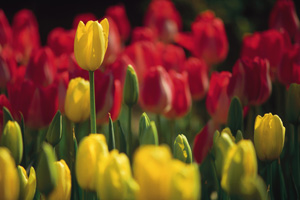 1. Thin or compacted turf will benefit from core aeration and overseeding.
1. Thin or compacted turf will benefit from core aeration and overseeding.
2. Mow your lawn any time the grass is 1 ½ times the normal height, For example, if you mow at a 3-inch height, don’t let the grass get longer than 4 to 5-inches.
3. Remove spent blooms on tulips, daffodils and other spring flowering bulbs. The plant will focus its energy on growing new bulbs rather than producing seeds.
4. Hummingbirds and orioles return to northern states by mid-May. Clean and refill feeders to attract these colorful birds to your backyard.
5. Plant tomatoes, peppers and melons after all danger of frost is gone and the soil is warm. This is usually the last week in May.
6. Plant tomatoes in a different spot each year to reduce fungal disease problems.
7. May is an excellent time to plant a shade tree or flowering tree in your yard.
8. Plant dahlias, gladioli, cannas and other summer flowering bulbs.
9. Insert stakes or hoops now to prevent plants like peonies, asters and baptisia from flopping over.
10. Herbs can hold their own in early spring containers. Snip leaves to season dishes and create salad dressings.
For more information visit the UConn Home and Garden Center or UConn Extension.
Photo: Iowa Extension